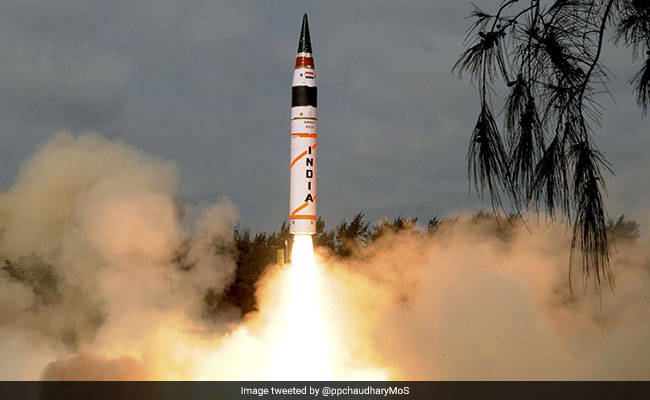NEW DELHI – India on Thursday tested its longest-range intercontinental missile Agni-5, the country’s Defence Minister Nirmala Sitharaman said.
“The current development is a part of efforts to build a nuclear deterrent against neighboring Pakistan and China,” the minister said.
The 5,000-km range (3,107-mile) Agni missile was tested from an island in India’s eastern coast in the Bay of Bengal, the ministry stated on its official Twitter account.
India has successfully test fired the 5000-km range Inter-Continental Ballistic Missile Agni-V at 9:53am today. The Made in India canistered missile, having 3 stages of propulsion, was test fired from Abdul Kalam island off Odisha coast #MakeInIndia4Defence
— Raksha Mantri (@DefenceMinIndia) January 18, 2018
The Agni-5 is an advanced version of the indigenously built Agni, or Fire, series, part of a program that started in the 1980s. It has been tested previously before.
New Delhi says it faces a twin threat from both bitter foe Pakistan, which is developing a nuclear and missile program of its own, and China.
In recent years, a long-running dispute has flared up with China over the Himalayan border.
The missile was tested from Abdul Kalam Island off the Odisha coast. Describing the trial as “fully successful”, sources told Press Trust of India that the sophisticated missile traveled for 19 minutes and covered 4,900 km.
The Agni-5 was last tested on December 26, 2016. The first two successful flights of Agni-5 in 2012 and 2013 were in open configuration.
With Agni-5, India will join the super-exclusive club of countries with ICBMs or intercontinental ballistic missiles (with a range of over 5,000-5,500 km); the others are the US, Britain, Russia, China, and France, reports NDTV.
The missile’s canister-launch version gives the armed forces flexibility to swiftly transport and fires the missile from anywhere. Combined with India’s regional satellite-based navigation system NAVIC, Agni-5 is a great force multiplier for the armed forces.
The missile can be deployed from mobile launchers and can even be hidden in a railway wagon. What makes it a great asset for India’s second strike capability in case of a nuclear war, Agni-5 can be launched from anywhere and anytime.
If required, Agni-5 can also be used to target satellites as an anti-satellite weapon and can also be used to launch Indian satellites in hostile circumstances, the report added.














